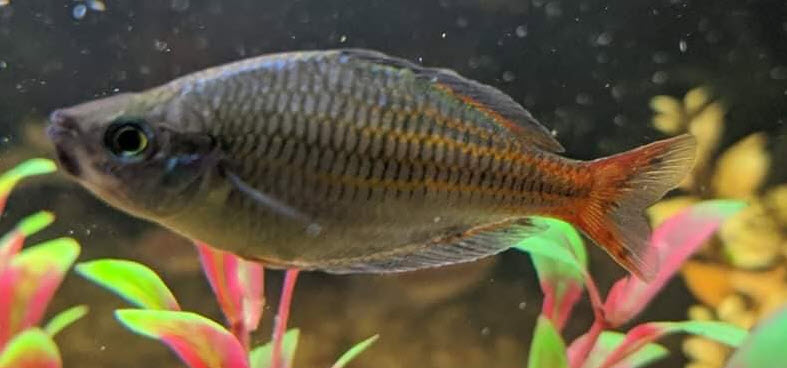
There are many species of “black spot” flukes. They are poorly studied. Almost all species have a life cycle which goes through birds, then snails, then fish, then birds etc. As a result, black spot is almost always found in fish which have been raised in ponds. They all seem to be pretty harmless and go away with time (like several months).
Black spot disease is typically caused by the larvae of parasitic digenetic flukes of the genus Neascus (Cercaria and Metacercaria). It is called diplopstomiasis. The larval flukes burrow into the skin of a fish, causing the formation of a cyst. The term “Black Spot” refers to the formation of black pigmented patches in the muscle and skin around which the parasite lives. Infested fish exhibit black, slightly raised nodules in the skin which are often less than 1 mm in diameter (the size of a grain of salt).
The “raised nodules” are very small so they don’t really “stick out into the water”. The swelling is only observable under a microscope or with an eye loop. Black spot disease can be difficult to spot in a dark fish as the black spots tend to blend in. The rainbowfish at the top of this article is one such fish.
These flukes normally cause little harm to the fish. Young fish have growth problems if heavily infected. Like other flukes, these flukes cause the fish discomfort and the fish flash, twitch and rub themselves against substrate and decorations. They sometimes produce slime coat syndrome.
Black spot is cured by Praziquantel but treatment really isn’t necessary. The disease tends to be self limiting and typically will just go away on its own with time.
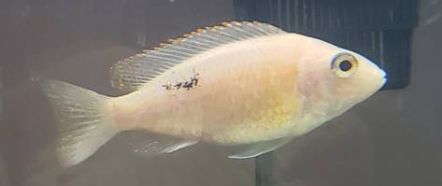
.
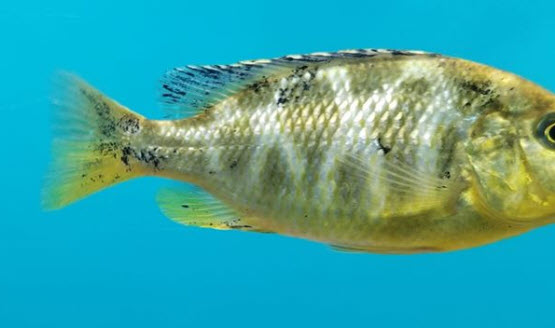
.
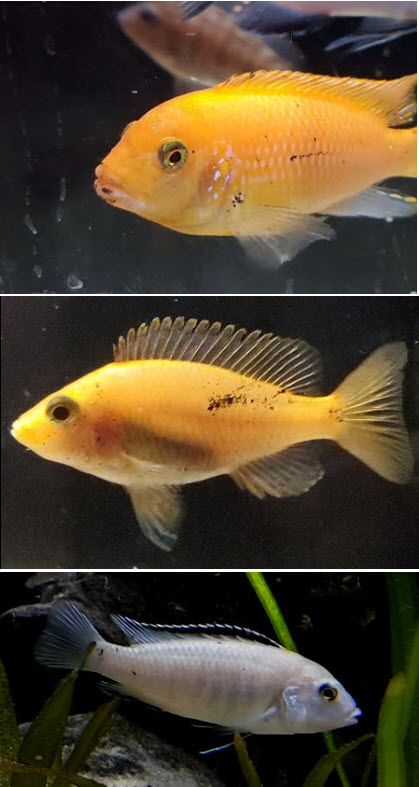
There are many species of these type of flukes with very complex life cycles and somewhat varying presentations. Digenetic flukes are a subclass of parasitic flatworms (class Trematoda) characterized by a complex life cycle involving developmental multiplying stages in a mollusk (typically a snail) intermediate host, an adult stage in a vertebrate such as a fish, and most often involving an additional transport host or an additional intermediate host like a bird (di = two, + genesis = generation).
Note some class these trematodes as parasites of birds. This is not correct. You cannot class these trematodes as being parasites of only one type of organism. They are most often parasites of THREE types of organisms: birds, fish, and snails.
There are some interesting myths about black spot. Some say it is due to too much spirulina in the diet. Other say the black spots are due to nerve damage from aggression. Others say it is due to ammonia poisoning. As usual the purveyors of these myths are quite strong in their beliefs. I cannot sugar coat it. These people are simply wrong.
Black Spots on the Chin
There is another type of black spot which can spread in the freshwater aquarium. The black spots occur largely on the chin and mouth of cichlids. The spots come and go rather erratically. The spots can be there one day, gone the next, and back the next day. It is probably just a fluke with a different presentation but it may well be a completely different problem. There isn’t any data I can find on them. The spots do seem to be harmless and the fish do not flash when they have them.

.

Genetic Black Spots
Most black patches on fish are genetic, and not a product of a disease. They typically occur in highly hybridized inter-genus fish. Parrotfish commonly have black spots which come and go with stress levels. These are nothing to worry about.

Light colored discus often get “freckles”, which is called “peppering”. It is genetic and there is nothing one can do about it.
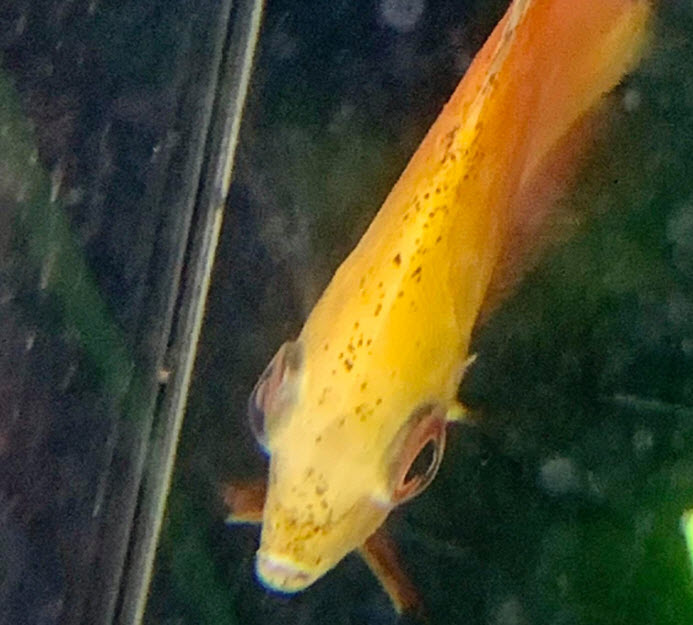
And of course black spots on goldfish are almost always genetic. They do not indicate “ammonia poisoning”. That is just another common fish myth.
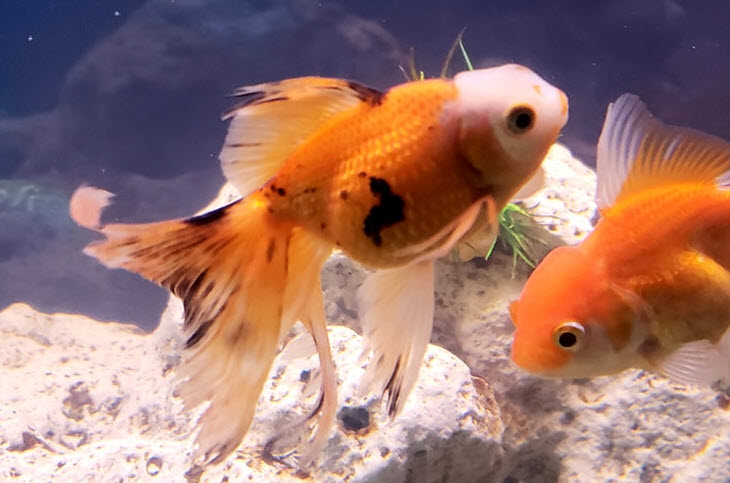
Note sometimes it is VERY difficult to tell if it is genetics or flukes causing the problem. This fish probably has black spot flukes based on the slime coat disease obvious on the head. But these black spots COULD be genetic. It is tough to be sure which it is.

Return to Diseases Menu
.
Aquarium Science Website
The chapters shown below or on the right side in maroon lead to close to 400 articles on all aspects of keeping a freshwater aquarium. These articles have NO links to profit making sites and are thus unbiased in their recommendations, unlike all the for-profit sites you will find with Google. Bookmark and browse!
.

Dave says
Black spot is cured by Praziquantel but treatment really isn’t necessary. The disease tends to be self limiting and typically will just go away on its own with time.
Sreykhouch says
តើជំងឺអ៊ុចខ្មៅក្នុងសាច់ត្រីមានថ្នាំសម្រាប់ព្យាបាលទេ?
Translated from Khymer ….. Is there a cure for black spot disease in fish.
Ovidiu says
Hello, I have some fish displaying flashing/twitching with black dots on their body(some on the chin). There are no red dots on any fish and never have been, although the black dots appeared months ago(also two fish got inflamed gills). In the “black spots” article you are saying treatment is not really necessary, yet they are still called “flukes”. Is there a clear distinction between the two? One requires treatment while the other does not?
Dave says
In reply to Lucy …. It is very doubtful it is black spot disease. It is probably just genetic. What species of fish is it?
LUCY RODRIGUES says
Thank you for you comments.
Ive had a fish that’s got swim bladder & had it for weeks, months but now he has black sports should i take him out of the tank as im worried my other fish will get this disease